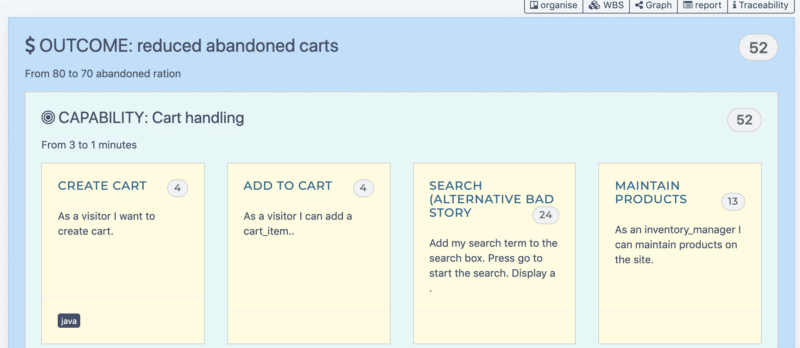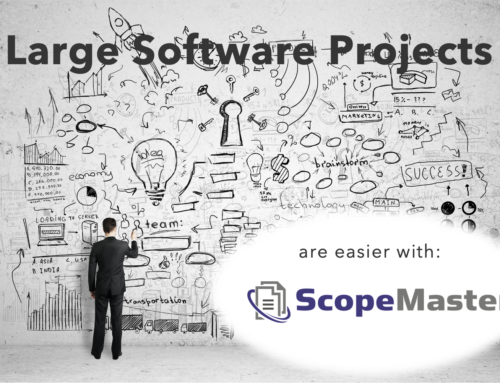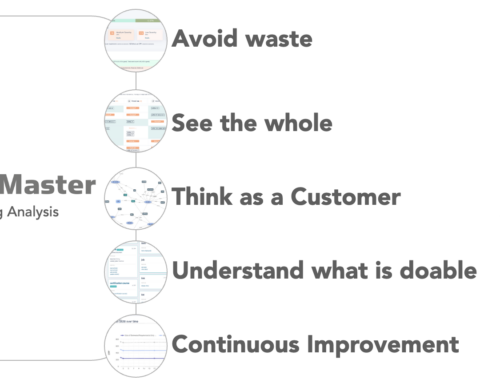Can you trace the value of your user stories back to business outcomes? If not, you may be wasting valuable team time on your software projects. Follow this simple technique to ensure that all your user stories are delivering a valuable contribution to business benefit. This is an excellent way to prioritise your backlog.
- Identify the quantifiable business outcome of your software endeavour in business terms.
- Determine the high level capabilities needed to deliver that business outcome.
- Finally break down your user stories into bite size pieces of functionality that are needed to deliver each capability.
Once you have finished this exercise, you should be able to say
“this user story is needed to deliver this capability which is needed to achieve this measurable business outcome.”
What is a Quantifiable Business Outcome?
The quantifiable business outcome is a scalar change in a business metric that is expected following the implementation of the software. It must be expressed in business terms, excluding all technical terminology.
The technique of quantifying business goals has been championed by Tom Gilb and others in numerous publications. Tom stresses that all software should have quantifiable business goals as a pre-requisite to any detailed requirements work.
What are Capabilities?
In this context a capability is a high level phrase that describes a cohesive set of functionality that is needed to deliver a specific business outcome. Examples are: “Online user authentication”, “Checkout functionality”, “product search”.
What happens to User stories that are not in an Epic?
If you have a user story that does not fit within an Epic, that is not needed for a capability, then perhaps this is a candidate for exclusion from your backlog. Ask yourself, is this necessary to deliver a capability? If not, look to discard it.
How can ScopeMaster help trace user stories to value?
Aligning user stories to business value, is not made easy by most software team tools. As described in this article , even using Jira, the most popular such tool, aligning stories to business value can be quite tricky. That is why we have worked to provide an easy way to do this using ScopeMaster. We call it the value tracer, and it is specifically designed to help you align stories to quantifiable business outcomes. Just drag and drop your stories onto Capabilities (or Epics) and then drag the Capabilities onto the Outcomes. It’s as easy as that. You can then view this traceability in a number of different ways, and see how each user story contributes to your business goals. Once again, ScopeMaster stimulates valuable thinking about your user stories, so that you can start your project off on the right foot with a complete, sized and prioritised backlog that is perfectly aligned to business goals. Furthermore this capability can be used to determine the cost of delay and weighted shortest job first priority.
Organising Value Traceability with ScopeMaster
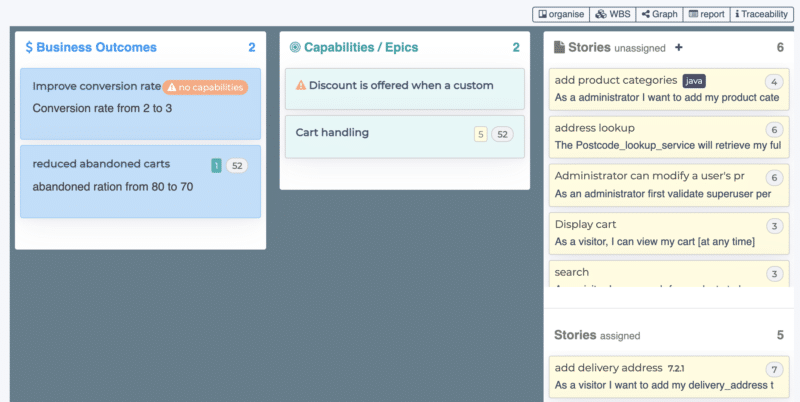
Exploring Value Traceability – stimulates critical thinking
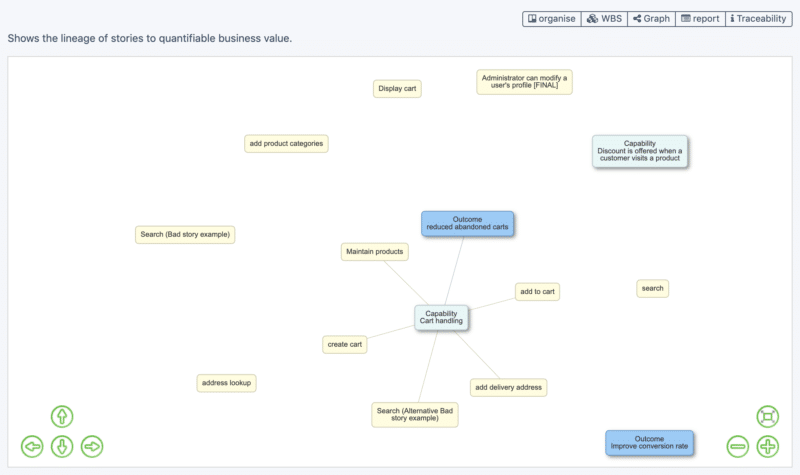
Reporting Value Traceability with ScopeMaster
